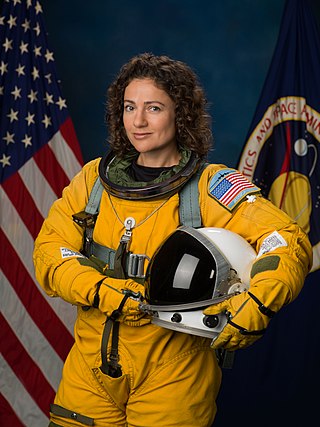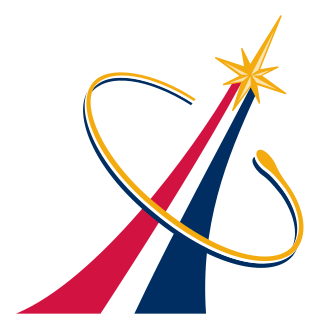
Edward Michael "Mike" Fincke is an American astronaut who formerly held the American record for the most time in space. His record was broken by Scott Kelly on October 16, 2015.

Shannon Walker is an American physicist and a NASA astronaut selected in 2004. She launched on her first mission into space on June 25, 2010, onboard Soyuz TMA-19 and spent over 163 days in space.

Satoshi Furukawa is a Japanese surgeon and JAXA astronaut. Furukawa was assigned to the International Space Station as a flight engineer on long-duration missions Expedition 28/29 (2011) and Expedition 69/70 (2023-2024).

Akihiko Hoshide is a Japanese engineer, JAXA astronaut, and former commander of the International Space Station. On August 30, 2012, Hoshide became the third Japanese astronaut to walk in space.

Takuya Onishi is a Japanese astronaut who was selected for the Japan Aerospace Exploration Agency (JAXA) in 2009. He spent four months on board the International Space Station in 2016.

Kimiya Yui is a Japanese astronaut from the Japan Aerospace Exploration Agency (JAXA). He was selected for the agency in 2009.

Andreas Enevold "Andy" Mogensen is a Danish engineer and ESA astronaut who is best known for being the first Dane to fly in space as part of the European Space Agency's Iriss program. Mogensen has also been involved in a number of other space-related projects throughout his career, including working as a test engineer for ESTEC and as a member of the European Astronaut Corps. In addition to his work with ESA, he has also worked with NASA and other international space agencies. Mogensen returned to space in August 2023 for his second spaceflight to the ISS onboard SpaceX Crew Dragon as the first non-American to serve as a pilot.

Colonel Luca Parmitano is an Italian astronaut in the European Astronaut Corps for the European Space Agency (ESA). He was selected as an ESA astronaut in May 2009. Parmitano is also a Colonel and test pilot for the Italian Air Force. He is the first Italian to command the International Space Station (ISS) during Expedition 61.

The Boeing Starliner is a class of partially reusable spacecraft designed to transport crew to the International Space Station (ISS) and other low-Earth-orbit destinations. It is manufactured by Boeing, with the Commercial Crew Program (CCP) of NASA as the anchor customer. The spacecraft consists of a reusable crew capsule and an expendable service module.

Jessica Ulrika Meir is an American NASA astronaut, marine biologist, and physiologist. She was previously an assistant professor of anesthesia at Harvard Medical School, Massachusetts General Hospital, Boston, following postdoctoral research in comparative physiology at the University of British Columbia. She has studied the diving physiology and behavior of emperor penguins in Antarctica, and the physiology of bar-headed geese, which are able to migrate over the Himalayas. In September 2002, Meir served as an aquanaut on the NASA Extreme Environment Mission Operations 4 crew. In 2013, she was selected by NASA to Astronaut Group 21. In 2016, Meir participated in ESA CAVES, a training course in which international astronauts train in a space-analogue cave environment. Meir launched on September 25, 2019, to the ISS onboard Soyuz MS-15, where she served as a flight Engineer during Expedition 61 and 62. On October 18, 2019, Meir and Christina Koch were the first women to participate in an all-female spacewalk.

CAVES, an acronym for Cooperative Adventure for Valuing and Exercising human behaviour and performance Skills, is a European Space Agency astronaut training course in which international astronauts train in a space-analogue cave environment. Designed at the European Astronaut Center, the course aims to prepare astronauts for safe and efficient long duration spaceflight operations by means of a realistic scientific and exploration mission within a multicultural, ISS-representative team.

Expedition 56 was the 56th expedition to the International Space Station, which began on June 3, 2018, upon the departure of Soyuz MS-07. Andrew Feustel, Oleg Artemyev, and Richard R. Arnold were transferred from Expedition 55, with Andrew Feustel taking the commander role. Alexander Gerst, Serena M. Auñón-Chancellor, and Sergey Prokopyev launched aboard Soyuz MS-09, on June 6, 2018. Expedition 56 ended with the departure of Soyuz MS-08 on October 4, 2018.

Expedition 57 was the 57th expedition to the International Space Station, which began on October 4, 2018, upon the departure of Soyuz MS-08.

Boeing Starliner-1 also called Post Certification Mission-1 (PCM-1) is planned to be the first operational crew mission of the Boeing Starliner to the International Space Station (ISS) as part of the Commercial Crew Program. It would be the fourth orbital flight mission of the Starliner overall. It is scheduled to launch no earlier than early 2025, transporting members of a future ISS Expedition.

The Boeing Orbital Flight Test-2 was a repeat of Boeing's unsuccessful first Orbital Flight Test (Boe-OFT) of its Starliner spacecraft. The uncrewed mission was part of NASA's Commercial Crew Program. OFT-2, using Starliner Spacecraft 2, launched 19 May 2022 and lasted 6 days. Starliner successfully docked with the International Space Station (ISS) on 21 May 2022. It stayed at the ISS for 4 days before undocking and landing in the White Sands Missile Range on 25 May 2022.

Boeing Starliner Calypso is a space capsule manufactured by Boeing and used in NASA's Commercial Crew Program. On 20 December 2019, Calypso launched on the Boeing Orbital Flight Test mission, an uncrewed test flight of Starliner to the International Space Station. The spacecraft was scheduled to dock to the ISS and then return to Earth following a week in space, although due to several software issues the spacecraft was unable to rendezvous with the station and landed after two days in space, resulting in Boeing needing to schedule a second Orbital Flight Test.

The Commercial Crew Program (CCP) provides commercially operated crew transportation service to and from the International Space Station (ISS) under contract to NASA, conducting crew rotations between the expeditions of the International Space Station program. American space manufacturer SpaceX began providing service in 2020, using the Crew Dragon spacecraft, and NASA plans to add Boeing when its Boeing Starliner spacecraft becomes operational no earlier than 2025. NASA has contracted for six operational missions from Boeing and fourteen from SpaceX, ensuring sufficient support for ISS through 2030.

SpaceX Crew-2 was the second operational flight of a Crew Dragon spacecraft, and the third overall crewed orbital flight of the Commercial Crew Program. The mission was launched on 23 April 2021 at 09:49:02 UTC, and docked to the International Space Station on 24 April at 09:08 UTC.

Expedition 71 is the 71st long-duration expedition to the International Space Station. The expedition began with the departure of Soyuz MS-24 on 6 April 2024 with cosmonaut Oleg Kononenko continuing his ISS command from Expedition 70. It will end with his departure on Soyuz MS-25 with crewmates from MS-24 and MS-25 on 24 September 2024.

SpaceX Crew-8 is the eighth crewed operational NASA Commercial Crew flight and the 13th overall crewed orbital flight of a Crew Dragon spacecraft. The mission launched on 4 March 2024.




















